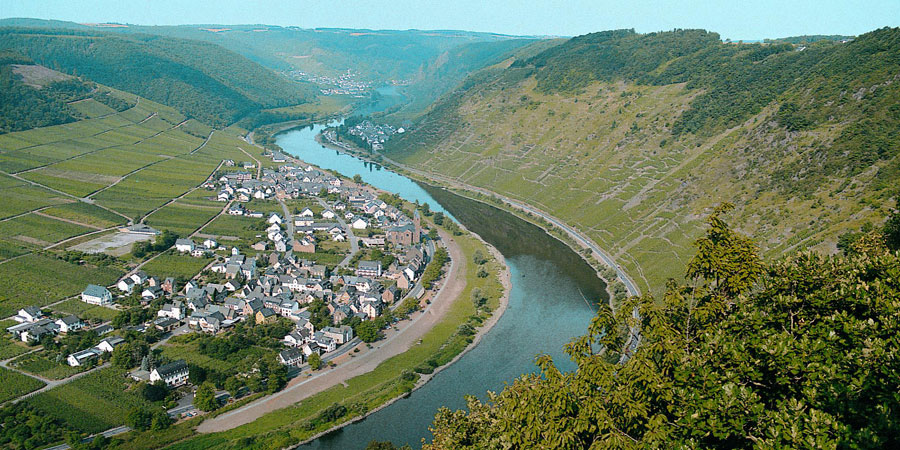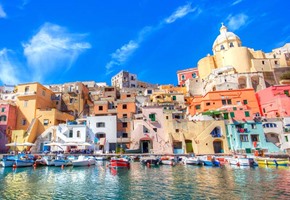Of Germany's thirteen wine-producing regions, the Moselle is arguably the most widely recognised. Taking its name from the Moselle River, this beautiful part of Germany is famous for its Riesling wines. The first vineyards of the Moselle Valley were established by the Romans, who conquered in 50BC, and soon planted grapes to save from importing wine from their native Italy. One of the most northerly wine regions in the world, Moselle is the fifth largest wine producing region in Germany and is celebrated for its internationally-acclaimed wines.
Grown at up to a 70% gradient on the steep banks of the Moselle River, the grapes of this region often have to be hand-picked, as they are inaccessible by machine. The harvest takes place in October, allowing up to an extra twenty days on the vine, compared to more southerly vineyards, which producers believe allows more flavor to develop. Over 90% of the grapes produced here are white, with particular attention paid to Riesling, a signature wine for the Moselle Valley.
If you're thinking about combining your love of wine with your love of travel, the Moselle Wine Train is one of the best rail journeys to take.
Nestled on the banks of the Moselle River, charming Cochem is a picturesque village surrounded by vineyards. Medieval in origin, Cochem's old quarter is particularly delightful, as is its 19th century mustard mill and the impressive Gothic castle that dominates the town, the Reichsburg. Home to an fantastic arts centre, housed in what was once the town's monastery, Cochem is a wonderful base for exploring the surrounding Moselle area and enjoying its delicious regional wines.
Boasting the title of Germany's oldest town, Trier offers a blend of Roman history and superb local wines. Founded by the Romans in 16BE, Trier is home to the oldest cathedral in Germany, The Cathedral of St Peter, which, together with the town's Roman monuments, including the Porta Nigra, forms a UNESCO World Heritage Site.
Hemmed in by beautiful vineyards, Trier has a fascinating architectural heritage that is well worth exploring. Of particular interest is the Porta Nigra, a Roman city gate named for its dark grey sandstone. One of four original gates, the Porta Nigra is the only still standing today, and is a popular tourist attraction.
Spanning both banks of the river Moselle, Traben and Trarbach were originally two quintessential German villages, but have since amalgamated into one river-straddling town. With its old-world feel and timber-frame houses, Traben-Trarbach is a pleasant spot for a visit, offering beautiful scenery, delightful architecture and, of course, ample opportunity to taste the region's award-winning wines. Famed for its sprawling underground wine vaults, the town also offers spectacular ruins to explore. The remains of Grevenburg Castle are within easy walking distance of the town centre, and offer stunning views of the surrounding landscapes. Dating back to 1350, the ruins are easily accessible on foot or by car, and a small restaurant at the top of the hill allows you to enjoy a drink and a reasonably priced meal while taking in the panoramic views.
Experience the beauty of Europe by train while sampling wonderful wine on board Germany's Moselle Wine Train.






